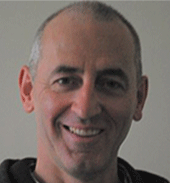Guest Blog by Michael Shea: Biodynamic Operating Principles
I once heard that biodynamic practice is the creative application of a set of principles. Consequently, over all the years I’ve been teaching and making numerous mistakes both clinically and in teaching Primary Respiration, I have settled on a five step process. This process is called:
- orienting
- synchronizing
- attuning
- disengaging
- and ignition
Each of these states or stages of biodynamic perception are practiced each time a clinician’s hands are placed in a new position on a client’s body.
Let me just say a few words about orienting. Orienting means that the practitioner establishes a three dimensional sense of their body or an image as the starting point for practice. I like to direct students to sensing every square millimeter of the surface of their skin at the very beginning of a session and then periodically returning to that three dimensionality or wholeness throughout the session. So the starting point of practice is wholeness. But it is wholeness as a felt sense or image. The question is what is the image of three dimensionality. It is that of a transparent fluid body. I simply sit still and imagine that the entire contents of my body is a beautiful, clear, aquamarine ocean and my skin is clear like glass. This is also an image of an embryo, because an embryo is 98% fluid.
So this is the first principle for me in biodynamic practice, which is to establish a very real sensibility around the shape of my body being one single continuum bounded by the skin and its transparency. The study of interpersonal neurobiology demonstrates that when the practitioner can inhabit a conscious awareness of three-dimensionality, this generates a resonance for the same possibility within the client’s brain, nervous system and cardiovascular system.
Finally, orienting refers to stillness and in order to discover one’s three-dimensionality, one must also be still as Dr. Becker was fond of saying. Thus the posture of the practitioner is still and the mental thoughts of the mental practitioner begin to slow and enter a space of serenity. Otherwise, three-dimensionality remains difficult or fragmented. This is the promise and possibility of biodynamic practice. To start with wholeness and stay in wholeness as a conscious awareness throughout a session and possibly throughout one’s life. In my next posting I will talk about synchronizing.
Michael J. Shea is one of the preeminent educators and authors in the fields of somatic psychology and craniosacral therapy. He presents seminars throughout the U.S., Canada and Europe. He is the author of Biodynamic Craniosacral Therapy Vols 1 and 2 and the soon to be published Vol 3. His teaching programme link is here: http://michaelsheateaching.com/





 Ged Sumner
Ged Sumner